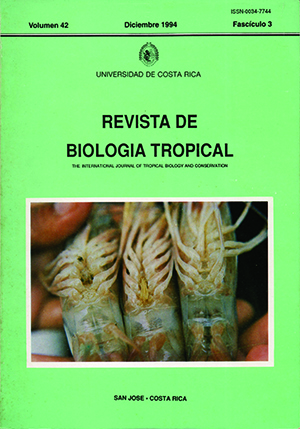Resumen
Existen diferencias notables en biomasa, composición y distribución del zooplancton, entre las bahías de la Ascensión y de Chetumal, en el· litoral oriental de la Península de Yucatán. La de Chetumal representa un sistema heterogéneo desde el punto de vista hidrológico y la comunidad zooplánctica local está representada básicamente por especies eurihalinas; las larvas de peces y decápodos son un componente importante del zooplancton local; esto indica que esta bahía es propicia para la crianza de estas especies. Sin embargo, es probable que la mayor parte de las larvas sean exportadas o bien, emigren del sistema a partir de sUs etapas juveniles o autónomas. El aislamiento de la influencia marina y la baja energía interna restringen la productividad y riqueza faunística de la Bahía de Chetumal. La Bahía de la Ascensión es un sistema hidrológicamente más homogéneo, con mayor influencia marina; su fauna zooplánctica local es más diversa y abundante, yes probable que la emigración de larvas de peces y de decápodos sea menos intensa que en el caso de la Bahía de Chetumal.##plugins.facebook.comentarios##

Esta obra está bajo una licencia internacional Creative Commons Atribución 4.0.
Derechos de autor 1994 Revista de Biología Tropical
Descargas
Los datos de descargas todavía no están disponibles.


